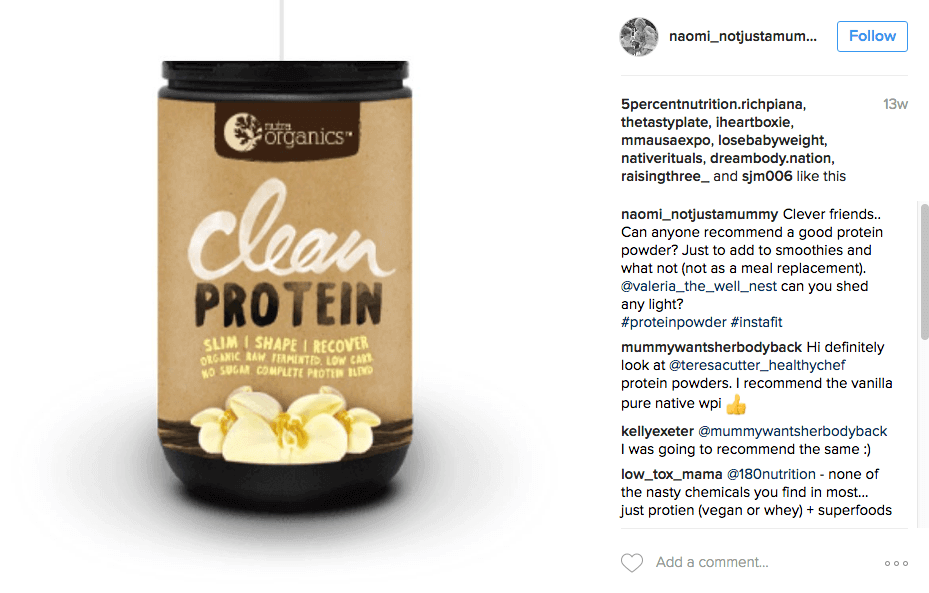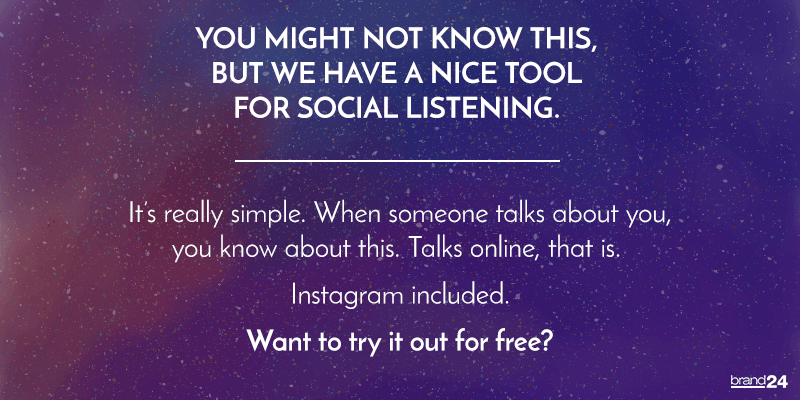How Can Fitness Companies Use Social Listening?
Motivation, competition monitoring, listening for trends and solving problems. Sounds vague? It’s not! Read on to find out how fitness companies can use social listening!
Listen to the Complainers
Here’s an idea: listen to the complainers. People who want to train, but are not training. Find out the reason. Usually, it’s laziness or the “lack of time” that we all experience.
Think of how you could solve their problem for them. You can provide a universal fitness calendar and hand it to them. Just like AnytimeFitness did:
Listen to the ones who suffered an injury, and provide some motivation. Nowadays, that’s best achieved through Instagram – mainly due to the focus on the visual content. And the attention, that the platform currently grasps in the most efficient way.
But that’s not all. 68 percent of Instagram users tend to embrace brands, whereas Facebook users shy away from them. When it comes to actual engagement numbers, Instagram has 58 times more engagement per post than Facebook. Another thing that speaks for the image-focused platform is the organic reach, which for the companies has dropped significantly during the last few months. Even now, after the switch to an algorithmic timeline, Instagram is still more efficient.
The Promotion Part
Go and have a look at what’s being said on Twitter. Download some sort of hashtag-suggesting app, put down #fit and look for similar propositions.

Then, get on Twitter and try to find discussions relevant to your business. The promotional aspect of using Twitter has to be aligned with your actual point of view – just like in any other conversation. If you manage to actually provide some insight, you’ll be taken as a natural element of the conversation, not just another marketer who’s trying to blend in. The easy thing here is that you’re probably not just another marketer. You’re using social listening, and that means that you focus on the people, not just the metrics. It works just as efficient on Instagram, as it does on Facebook, Twitter, or the Internet in general.
So, let’s say that you do have your list of hashtags and tweets about fitness, health, et cetera. What now?
Watch Out for The Hashtags
If you do find an interesting topic, think of how could you use it to your own advantage. Maybe trends in your business correlate with current Twitter/Instagram/Facebook trends? If so, that’s great. This is an old media practice – to write about what’s trending, and trying to slip into that momentum somehow. Doing that in an efficient, value-adding way will get you ahead for a bit. If there’s nothing going on at the moment, you can stick to non-branded, uplifting messages. In general, people respond positively to that.
Then, once you spotted a trending hashtag, put it down into your Brand24 dashboard. Monitor, listen and interact with the prospects; you’ll have all the mentions in the world at your disposal.
Then – Social Selling
Let’s say you work for a nutrition company. Using social listening, you can not only motivate people to practice on their own; you can also try and get them to buy your goods. This is called social selling.

The whole idea is based on one’s actual need, though. Don’t go and sell everything to everyone. Try to “extract” prospects who find value in your product.
For example – if you’re listening to someone tweeting about “the best supplements for a middle-aged man who wants to quickly gain muscle mass“, and you actually have such a product in stock, why would you not reach out?
The case below is a perfect opportunity to reach out with an offer:

Start with putting down an ever-lasting “can anyone recommend” keyword in your Brand24 dashboard, and see where it takes you.

Related read:
- How to measure PR campaign?
- Top 11 social listening tools [2022 update]
- The golden rules of PR crisis management
- Top 10 brand monitoring tools
Top Reads
Brand Monitoring: Tools & Guide for 2026
Brand Awareness Strategy [The Ultimate Guide for 2026]
The Best AI Hashtag Tracker and Other Hashtag Tracking Tools [2026]
Social Media Reach: How to Measure & Improve It in 2026?
X (Twitter) Analytics Tools: The 10 Best to Try in 2026
Sentiment Analysis: What is it & Why do You Need it in 2026?
Share of Voice: Definition, Calculation, Tools [2026 Guide]
Brand Reputation Management: 6 Expert Tips for 2026
A Complete Guide to AI Social Media Analysis [2025]
How to See How Many Times a Hashtag Was Used on X (Twitter)
Start Social Listening!
Get the Brand24 trial and start social listening like a PRO.